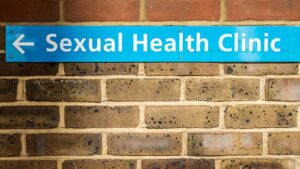
The history of gonorrhea is not entirely clear, but it is believed to have been present throughout human history. The first documented cases of gonorrhea were in the 16th century, when it was referred to as the “venereal disease” or “the clap”.
In the early 1800s, the bacterium that causes gonorrhea, Neisseria gonorrhoeae, was identified by the German physician Albert Neisser. He observed the bacteria in the discharge of infected patients and named it after himself.
Over time, treatment for gonorrhea has evolved, with the first antibiotics becoming available in the 1930s. However, the emergence of antibiotic-resistant strains of Neisseria gonorrhoeae has made treating gonorrhea more challenging in recent years.
Today, gonorrhea is a common sexually transmitted infection worldwide and can be easily diagnosed and treated with antibiotics if caught early. Regular testing and practicing safe sex are important for preventing the spread of gonorrhea and other STIs.
What is Gonorrhea?
Gonorrhea is a sexually transmitted infection (STI) caused by the bacterium Neisseria gonorrhoeae. It can affect both men and women and is transmitted through sexual contact, including vaginal, anal, and oral sex. It can also be passed from an infected mother to her baby during childbirth.
Gonorrhea can cause a range of symptoms, including discharge from the genitals, pain or burning during urination, and pain or swelling in the testicles in men. However, many people with gonorrhea have no symptoms, which is why it is important to get regular testing if you are sexually active.
If left untreated, gonorrhea can lead to serious health problems, including infertility, pelvic inflammatory disease, and an increased risk of HIV infection. However, gonorrhea is easily treated with antibiotics if caught early. It is important to complete the full course of antibiotics prescribed by a healthcare provider to ensure that the infection is fully cleared.
What Are The Symptoms of Gonorrhea
The symptoms of gonorrhea can vary between men and women and may not appear at all in some cases. Some common symptoms include:
For men:
- A burning sensation during urination
- White, yellow, or green discharge from the penis
- Pain or swelling in the testicles
For women:
- Pain or burning during urination
- Increased vaginal discharge
- Vaginal bleeding between periods
In some cases, gonorrhea can also cause rectal symptoms such as itching, discharge, and bleeding, as well as throat symptoms if the infection was transmitted through oral sex.
It’s important to note that many people with gonorrhea have no symptoms, which is why regular testing is recommended if you are sexually active. If left untreated, gonorrhea can lead to serious health problems, including pelvic inflammatory disease, infertility, and an increased risk of HIV infection.
How To Reduce The Risks of Getting Gonorrhea
You can reduce your risk of getting gonorrhea by taking the following steps:
- Practice safe sex: Use a barrier method of contraception, such as condoms, every time you have sex, including vaginal, anal, and oral sex.
- Get regular STI testing: If you are sexually active, get tested for gonorrhea and other STIs regularly, even if you have no symptoms.
- Limit your number of sexual partners: The more sexual partners you have, the greater your risk of contracting gonorrhea.
- Talk to your partner: Talk openly and honestly with your sexual partner(s) about their sexual health and history, and consider getting tested together.
- Avoid high-risk sexual behaviors: Avoid sexual activities that can increase your risk of contracting gonorrhea and other STIs, such as unprotected anal sex, and sharing sex toys.
By taking these steps, you can help reduce your risk of contracting gonorrhea and other STIs, and protect your sexual health.







